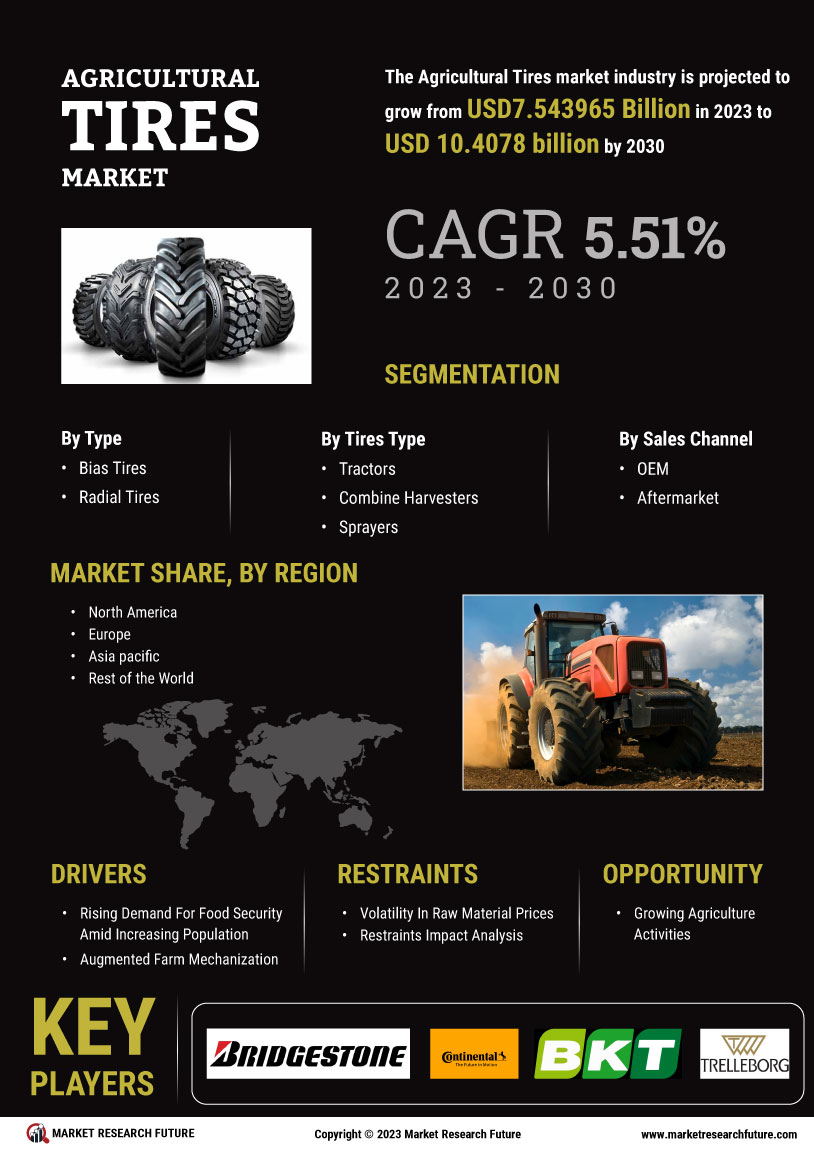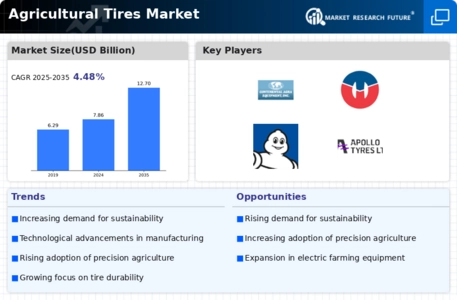Leading market players are investing heavily in research and development to expand their product lines, which will help the Agricultural Tires Market grow even more. Market participants are also undertaking various strategic activities to expand their footprint, with important market developments including new product launches, contractual agreements, mergers and acquisitions, higher investments, and collaboration with other organizations. The agricultural/farm tire industry must offer cost-effective items to expand and survive in a more competitive and rising market climate.
Manufacturing locally to minimize operational costs is one of the key business tactics manufacturers use in the agricultural tires industry to benefit clients and increase the market sector. In recent years, the agricultural tires industry has offered some of the most significant advantages to the agriculture sector. Major players in the agricultural tires market, including Bridgestone Corp., Continental AG, Balakrishna Industries Limited, Titan International Inc., Trelleborg AB, Michelin, Nokian Tyres PLC, Pirelli & C SpA, Alliance Tire Group, and Apollo Tyres and others, are attempting to increase market demand by investing in research and development operations.
Trelleborg AB is a engineering group focused on polymer technology, with headquarters in Trelleborg, Sweden, with 21,230 employees and with yearly revenue of 33.8 billion SEK as of 2021. The company first went public in 1964 and trades on the Nasdaq Stockholm exchange as a large-cap component. Trelleborg is a world leader in engineered polymer solutions that seal, damp, and protect critical applications in demanding environments. Its innovative solutions accelerate performance for customers in a sustainable way.
Trelleborg is a world leader in engineered polymer solutions that seal, damp, and protect critical applications in demanding environments. Its innovative solutions accelerate performance for customers in a sustainable way. Trelleborg AB announced its plan to increase its production output from North American agriculture tire facilities to cater to the growing demand. The company generates 18% of wheels sales from the North American market.
Michelin is a French multinational tire manufacturing company based in Clermont-Ferrand in the Auvergne-Rhône-Alpes region of France. It is the second-largest tire manufacturer behind Bridgestone and larger than Goodyear and Continental. Michelin, the leading tire company, is dedicated to sustainably improving the mobility of goods and people by manufacturing and marketing tires and services for every type of vehicle, including airplanes, automobiles, bicycles/motorcycles, earthmovers, farm equipment, and trucks.
It also offers digital mobility support services and publishes travel guides, hotel and restaurant guides, maps, and road atlases. Michelin launched its Agribib Row Crop IF (improved flexion) agriculture tires, specially crafted for self-propelled and trailed sprayers, which allow higher load capacity, improved traction, and reduced soil contraction.


















Leave a Comment